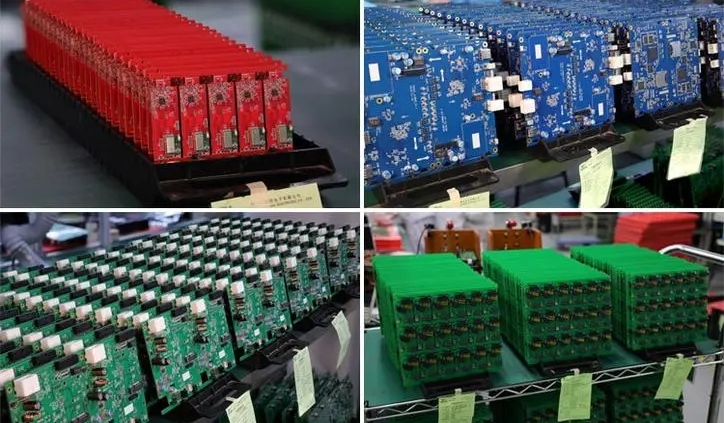What are the connections and differences between PCB, SMT and PCBA?
PCB, SMT and PCBA are key terms in the electronic product manufacturing process. They represent circuit boards, surface mount technology and assembled circuit boards respectively. In this article, we’ll explore the connections and differences between them in detail.
PCB is one of the most common components in electronic devices. It is usually made of a non-conductive material (usually paper, fiberglass, or plastic) on which wire connections between electronic components are formed. PCB design can be done on a computer and produced during the manufacturing process. The designer converts the circuit diagram into a physical layout, which is then transferred to the manufacturer using CAD software and finally generated through the manufacturing process.
SMT is a technology for surface-gluing components to a PCB. In traditional PCB manufacturing methods, components are usually attached to the board via nails or soldered pins. However, SMT technology replaces traditional socket components by using surface mount components (SMD), allowing components to be directly attached to the surface of the PCB, thereby improving component density, reliability and manufacturing efficiency.
Through SMT technology, electronic components can be arranged more closely on the PCB, thereby reducing the size of the circuit board and improving product reliability and performance. In addition, SMT can also realize automated production processes, reducing the need for manual operations and improving manufacturing efficiency. It is worth noting that although SMT technology can reduce the use of socket-type components, some special components (such as high-power components) may still require socket-type connections.
PCBA refers to a PCB that has completed component pasting and welding. During the PCBA process, the components are placed in the correct position on the PCB through SMT equipment, and then they are firmly fixed on the PCB using hot plug boards or other soldering methods. After completing the welding, a series of inspections and tests are required to ensure the quality and reliability of the PCBA. Ultimately, the PCBA will be integrated into the final product as a finished product.
To sum up, PCB, SMT and PCBA play different roles in the electronic manufacturing process. PCB is the basis of the circuit board, carrying the connections between electronic components; SMT technology is a method of pasting surface mount components onto the PCB, allowing the components to be arranged more closely on the PCB, improving the performance and performance of the circuit board. Manufacturing efficiency; PCBA refers to a PCB that has completed component pasting and welding. After a series of tests and inspections, it can be directly put into the manufacturing of the final product.
In modern electronics manufacturing, PCB, SMT and PCBA are indispensable links. Their close connection makes the manufacturing of electronic products more efficient and reliable. Through the application of these technologies, electronic devices with smaller size and higher performance can be realized to meet people’s demand for portable and powerful products.



